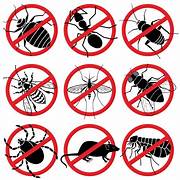Pest infestations can be a major headache for landlords and tenants alike. From rodents to insects, unwanted pests can cause property damage, health risks, and tenant dissatisfaction. Knowing how to prevent and manage these problems effectively is crucial to maintaining a safe and comfortable living environment. In this guide, we’ll cover common pest issues landlords face, how to prevent infestations, the responsibilities of both landlords and tenants, and cost-effective ways to manage pest control.
Common Pest Issues Landlords Face and How to Prevent Infestations
Pest problems can vary depending on the location and type of property. Here are some of the most common pests that landlords encounter and how to prevent them:
1. Rodents (Mice and Rats)
Rodents are notorious for chewing through electrical wires, insulation, and even walls. They can also contaminate food and spread diseases, making them a significant health hazard.
Prevention Tips:
- Seal Entry Points: Inspect the property for gaps, cracks, and holes around doors, windows, and the foundation. Seal any openings to prevent rodents from entering.
- Proper Waste Management: Ensure that tenants use sealed bins for garbage and dispose of waste regularly. Rodents are attracted to food scraps and improperly stored garbage.
- Remove Clutter: Encourage tenants to keep storage areas tidy, as cluttered spaces provide shelter for rodents.
2. Cockroaches
Cockroaches can spread bacteria and allergens, making them a serious problem, especially in multi-unit properties. They thrive in warm, dark, and moist environments.
Prevention Tips:
- Keep the Property Clean: Regularly clean kitchens and bathrooms, where cockroaches are most likely to find food and water. Ensure tenants clean up spills and food crumbs promptly.
- Seal Cracks and Crevices: Cockroaches can squeeze through tiny spaces, so seal cracks around pipes, cabinets, and baseboards.
- Fix Leaks and Moisture Issues: Cockroaches are attracted to moisture. Repair any leaks and ensure proper ventilation in damp areas like basements and bathrooms.
3. Ants
Ants are common pests that can invade rental properties in search of food and water. Once they find a food source, they can quickly form trails and infest the area.
Prevention Tips:
- Seal Entry Points: Identify and seal any cracks or holes where ants might be entering the property.
- Keep Food Stored Properly: Advise tenants to store food in airtight containers and clean up food spills immediately.
- Address Moisture Issues: Ants are attracted to moisture, so fix any leaks and ensure that kitchens and bathrooms are dry.
4. Bed Bugs
Bed bugs can be difficult to detect and even harder to eliminate. They hide in cracks, crevices, and bedding, making them a persistent problem if not addressed quickly.
Prevention Tips:
- Inspect Between Tenancies: Conduct thorough inspections for signs of bed bugs, such as dark spots on mattresses and furniture, between tenant stays.
- Provide Mattress Covers: Consider providing bed bug-proof mattress covers to minimize the risk of infestation.
- Educate Tenants: Educate tenants on how to spot bed bugs early and encourage them to report any signs immediately.
5. Termites
Termites can cause significant structural damage if left unchecked. They feed on wood and can weaken the integrity of the property.
Prevention Tips:
- Regular Inspections: Schedule annual termite inspections to catch infestations early.
- Reduce Wood-to-Soil Contact: Ensure that wooden parts of the building, such as decks and fences, do not have direct contact with the soil. Use concrete or metal barriers where possible.
- Remove Wood Debris: Clear any wood debris or mulch from around the foundation, as this can attract termites.
Tenant Responsibilities vs. Landlord Responsibilities for Pest Control
Pest control responsibilities can sometimes lead to disputes between landlords and tenants. It’s important to know who is responsible for pest management to avoid misunderstandings. Here’s how to navigate this issue:
1. Landlord Responsibilities
In general, landlords are responsible for ensuring that the property is habitable and pest-free when tenants move in. If pests are present due to structural issues, such as gaps in walls, leaks, or improper sealing, it is the landlord’s duty to address the problem. Landlords should also manage infestations that occur due to issues beyond the tenant’s control, like building-wide pest problems.
Key Responsibilities:
- Address pest problems reported by tenants promptly.
- Arrange regular inspections and preventive pest control treatments if needed.
- Repair any structural issues that could lead to infestations (e.g., cracks, leaks).
2. Tenant Responsibilities
Tenants are expected to keep the property clean and take measures to prevent attracting pests. If an infestation occurs due to poor hygiene, such as leaving food out, failing to dispose of garbage, or creating conditions conducive to pests, the tenant may be held responsible for the pest control costs.
Key Responsibilities:
- Maintain cleanliness in the property, especially in kitchens and bathrooms.
- Properly store food and dispose of trash regularly.
- Report any signs of pests to the landlord immediately.
Tip: Make sure the lease agreement clearly outlines pest control responsibilities to avoid disputes. Specify who is responsible for pest management costs under different circumstances (e.g., initial infestation vs. tenant-caused issues).
Cost-Effective Ways to Manage Pest Control in Your Rental Property
Pest control doesn’t have to be a significant expense if you take preventive measures and manage infestations promptly. Here are some cost-effective strategies:
1. Schedule Regular Inspections
Regular property inspections can help you catch signs of pests early before they become a bigger problem. Consider arranging seasonal inspections or including pest checks as part of routine property maintenance.
Tip: Hire a professional pest control company for an annual inspection. They can identify signs of infestations that might not be immediately visible.
2. Invest in Preventive Pest Control Treatments
Preventive treatments can save you money in the long run by reducing the risk of infestations. Consider scheduling treatments for properties that are more susceptible to certain pests (e.g., properties near wooded areas may benefit from termite prevention).
Tip: Discuss long-term pest control plans with a reputable pest management company. They often offer discounted rates for regular services, saving you money over time.
3. Educate Tenants on Pest Prevention
Tenant education is a crucial aspect of pest control. By informing tenants about their role in preventing infestations, you can reduce the likelihood of pests becoming an issue. Provide them with tips on how to keep the property clean and pest-free, and remind them to report any signs of pests immediately.
Tip: Include a pest prevention guide as part of the tenant welcome package. It can cover basic practices, such as proper food storage, waste disposal, and checking for pests.
4. Seal Entry Points and Fix Structural Issues
Preventing pests from entering the property is often the most cost-effective solution. Make sure to seal gaps around windows, doors, and plumbing. Repair any cracks or leaks that may provide entry points for pests. This will also help reduce maintenance issues unrelated to pest control, such as water damage or drafts.
Tip: During routine maintenance, check for any new openings where pests could enter and seal them immediately.
5. Maintain Clean and Well-Managed Outdoor Spaces
Unkempt outdoor areas can attract pests, so keep the property’s exterior clean and clutter-free. Trim bushes, mow the lawn, and remove any debris that might provide shelter for pests.
Tip: Consider installing outdoor trash bins with tight-fitting lids to discourage rodents and other pests from lingering near the property.
Key Takeaways
- Common pest problems include rodents, cockroaches, ants, bed bugs, and termites. Preventive measures like sealing entry points, fixing leaks, and regular inspections can help keep these pests at bay.
- Landlord responsibilities include ensuring the property is pest-free when tenants move in and addressing infestations caused by structural issues. Tenant responsibilities involve maintaining cleanliness and reporting pest issues promptly.
- Cost-effective pest control strategies include regular inspections, preventive treatments, tenant education, sealing entry points, and maintaining clean outdoor spaces.
At NG Property Management, we provide landlords with comprehensive property management services, including regular inspections and pest control solutions. Our team can help you create a preventive pest control plan to protect your property and keep your tenants happy. Contact us today to learn more.
Disclaimer: The information provided in this blog is for general informational purposes only and should not be considered legal advice. Please consult a professional for specific guidance on pest control responsibilities.



